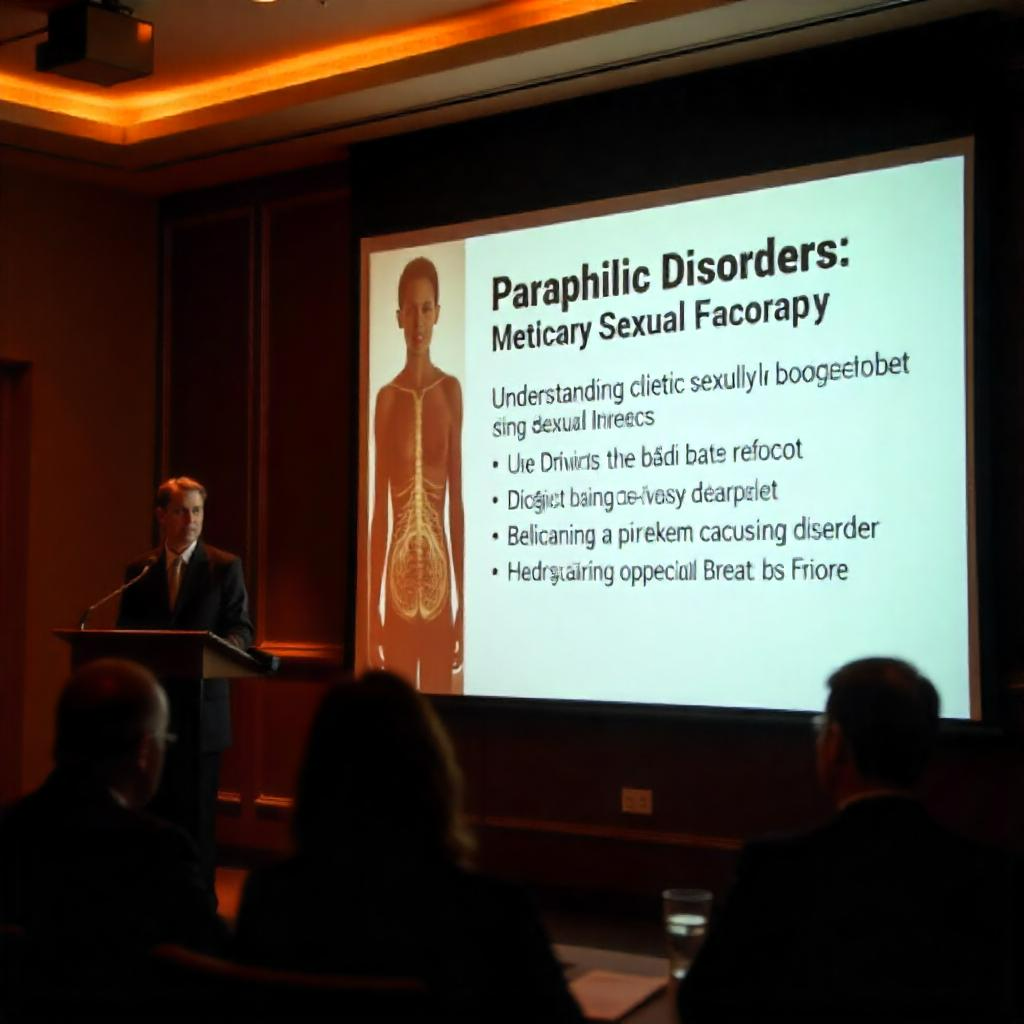What Are Paraphilic Disorders?
Paraphilic disorders are psychiatric conditions involving intense and persistent sexual interests that focus on objects, activities, or situations atypical for most individuals — and crucially, that cause distress, impairment, or harm to oneself or others.
Key features:
- Paraphilias are only diagnosed as disorders when they cause significant distress or involve non-consenting individuals.
- Not all unusual sexual interests are pathological.
- Recognized as mental health conditions in the DSM-5-TR (2022).
Paraphilic disorders often remain highly stigmatized, leading many affected individuals to avoid seeking help.
Paraphilia vs. Paraphilic Disorder: What’s the Difference?
A critical distinction:
- Paraphilia: An atypical sexual interest that may not cause distress, impairment, or harm. E.g., a person may enjoy sexual fantasies involving certain objects but never act on them harmfully.
- Paraphilic Disorder: The paraphilia causes distress or functional impairment or involves harm to others (e.g., non-consenting individuals).
Example: A man who experiences sexual arousal from cross-dressing but is not distressed and whose behavior doesn’t interfere with his life would not be diagnosed with a disorder. However, if his urges caused significant anxiety or impaired relationships, it might meet criteria for Transvestic Disorder.
This distinction is essential to avoid pathologizing consensual sexual diversity.
Common Types of Paraphilic Disorders
The DSM-5-TR identifies several paraphilic disorders, including:
Exhibitionistic Disorder
- Sexual arousal from exposing one’s genitals to unsuspecting strangers.
Voyeuristic Disorder
- Sexual arousal from observing unsuspecting people naked, disrobing, or engaging in sexual activity.
Frotteuristic Disorder
- Sexual arousal from touching or rubbing against a non-consenting person.
Sexual Masochism Disorder
- Sexual arousal from being humiliated, beaten, bound, or otherwise made to suffer.
Sexual Sadism Disorder
- Sexual arousal from inflicting physical or psychological suffering on another person.
Pedophilic Disorder
- Sexual arousal involving sexual activity with prepubescent children (age 13 or younger).
Fetishistic Disorder
- Sexual arousal from non-living objects or specific non-genital body parts.
Transvestic Disorder
- Sexual arousal from cross-dressing, which causes significant distress or impairment.
Other atypical interests may fall under “Other Specified Paraphilic Disorders” if they cause distress or risk harm.
Causes and Risk Factors
The causes of paraphilic disorders remain complex and not fully understood. Likely contributors include:
- Biological factors: Possible neurobiological differences or hormonal influences.
- Psychological factors: Early childhood experiences, trauma, or conditioning.
- Social factors: Cultural taboos, secrecy, and lack of outlets for discussing sexual interests.
Some individuals with paraphilic disorders also have co-occurring mental health conditions, such as mood or anxiety disorders.
Diagnosis and Assessment
Diagnosis of paraphilic disorders requires:
- Clinical interviews exploring sexual history, fantasies, and behaviors.
- Evaluation of distress, functional impairment, or risk to others.
- Ruling out other mental health or medical conditions.
Professionals often use tools like the Paraphilia-Related Disorders Scale or structured interviews to assess symptoms.
Important: Diagnosis must differentiate between consensual, non-distressing atypical interests and disorders causing significant harm.
Treatment Options for Paraphilic Disorders
Treatment varies depending on:
- The type of paraphilia
- The individual’s level of distress or risk
- Whether criminal behavior is involved
Psychotherapy
- Cognitive Behavioral Therapy (CBT):
- Identifies triggers and distorted thinking
- Teaches strategies to manage urges
- Relapse Prevention: Critical for individuals with offending behaviors.
Medication
- SSRIs: Reduce sexual urges and intrusive thoughts.
- Antiandrogens (e.g., medroxyprogesterone acetate):
- Used in severe cases to lower sexual drive.
- GnRH analogs (e.g., leuprolide): For high-risk individuals.
Risk Management
- For individuals at risk of offending, close legal monitoring and community support may be part of the treatment plan.
Treatment aims to reduce distress, control harmful behavior, and support safer, healthier sexuality.
Legal and Ethical Considerations
Paraphilic disorders intersect significantly with legal systems, especially when non-consensual or criminal acts are involved. Key issues:
- Mandatory reporting laws
- Civil commitment in some jurisdictions
- Ethical duty to protect potential victims
- Balancing individual privacy with community safety
Professionals must navigate these situations with sensitivity and strict ethical guidelines.
Living with Paraphilic Disorders
For individuals struggling with paraphilic disorders:
- Seeking help does not mean shame.
- Confidential therapy can help explore urges safely.
- Support groups and online resources may provide community and reduce isolation.
- Open conversations about sexual health can promote recovery and well-being.
Treatment can enable individuals to lead fulfilling, responsible lives while managing their sexual interests safely.













